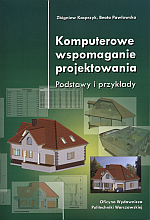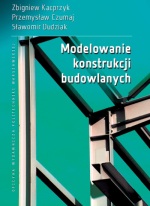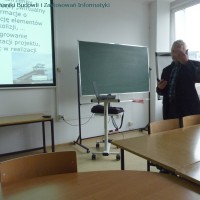|
Nagroda PTMKM dla pracowników Zakładu |
 |
 |
 |
Nagrodę Polskiego Towarzystwa Metod Komputerowych Mechaniki w roku 2021 (za osiągnięcia z roku 2020) w kategorii za „rozwiązanie zagadnień w zakresie mechaniki opublikowane w czasopismach” otrzymała praca:
R. Czubacki, T. Lewiński, Optimal archgrids: a variational setting, Structural and Multidisciplinary Optimization, 2020, vol. 62, nr 3, str. 1371-1393.
|
|
Vibrations of bars including transverse shear deformations and warping due to torsion |
 |
 |
 |
S. Czarnecki, T. Lewiński - Vibrations of bars including transverse shear deformations and warping due to torsion, Archives of Civil Engineering, vol. LXVIII, 2, 2021, pp. 355-381.
Abstract
The paper deals with coupled flexural-torsional vibrations of straight prismatic elastic bars made of a linearly elastic isotropic and homogeneous material. One of the aims is to develop an effective method of modelling vibrations of train rails of cross-sections being mono-symmetric, taking into account warping due to torsion as well as transverse shear deformations. The Librescu-Song 1D model has been appropriately adapted to the above research aims by incorporating all the inertia terms corresponding to the kinematic hypotheses. The finite element(FE) program has been written and its correctness has been verified. The results concerning natural vibrations compare favourably with those predicted by 3D FE modelling using dense meshes. The paper proves that neglecting warping due to torsion leads to omitting several eigen-modes of vibrations, thus showing that the popular Timoshenko-like models are useless for the vibration analysis of bars of mono-symmetric cross sections. |
|
An accurate method for fast assessment of under slab mats (USM) performance in ballastless track structures |
 |
 |
 |
A. Zbiciak, C. Kraśkiewicz, S. Dudziak, A. Al-Sabouni-Zawadzka, J. Pełczyński - An accurate method for fast assessment of under slab mats (USM) performance in ballastless track structures, Construction and Building Materials, Vol. 300, 20 September 2021,
Abstract
The paper is devoted to testing, modelling and performance assessment of vibration isolation products applied in ballastless track structures. In the first part of the paper, results of laboratory tests of vibration isolation products, such as under slab mats (USM) and under block pads (UBP) are summarised. On their basis, the Fractional Zener Model (FZM) is calibrated and it is shown that the model properly covers the stiffness and damping characteristics of tested materials in a wide frequency range. Then, results of the finite element analysis performed in a frequency domain using the Abaqus code are presented, taking into account the frequency-dependent material characteristics. The analysis concerned a ballastless track structure with a discrete system of rail fastening (embedded block system – EBS) laid on USM. The proposed approach was compared with the simplified one, in which the frequency-dependence of material properties is neglected. The presented modelling methodology, based on outcomes of laboratory tests, makes it possible to compare various vibration isolation systems in a short time. Consequently, it can be considered as a useful engineering tool. |
|
Modelowanie konstrukcji budowlanych |
 |
 |
 |
Z. Kacprzyk, P. Czumaj, S. Dudziak, Modelowanie konstrukcji budowlanych, OWPW, Warszawa 2021, ISBN 978-83-8156-154-8, stron 270.
Celem monografii jest pokazanie możliwości modelowania konstrukcji, skutków modelowania i możliwie najprostszego przedstawienia teorii MES umożliwiającego odpowiedzialne prowadzenie obliczeń i ich weryfikację. W pracy sformułowano standardy obliczeń inżynierskich wspomaganych komputerem.
W książce propagowane jest podejście, w którym poziom znajomości MES-u powinien zagwarantować użytkownikowi umiejętność poprawnego zbudowania modelu obliczeniowego (stopnie swobody w węźle, znakowanie sił, układy współrzędnych, elementy skończone – wykorzystane teorie, znakowanie, informacje o zbieżności, ...) oraz interpretacji wyników. Ważna jest też wiedza z zakresu sposobów aproksymacji wyników w postprocesorze, a także weryfikacji, walidacji i ewentualnie kalibracji modeli. Użytkownik systemu obliczeniowego powinien potrafić ocenić, na ile wiarygodne są obliczenia, oszacować błąd.
Jeszcze 30–40 lat temu najbardziej czasochłonnym etapem analizy konstrukcji były obliczenia arytmetyczne. Obecnie najbardziej czasochłonnym i najtrudniejszym etapem jest przygotowanie odpowiedniego modelu obliczeniowego generującego wiarygodne, weryfikowalne wyniki.
Książka dedykowana jest konstruktorom budowlanym, studentom kierunku budownictwo, uczestnikom kursów użytkowników programów wspomagających i automatyzujących projektowanie konstrukcji.
Przedmowa>>
Spis treści>> |
|
Optimal vault problem - form finding through 2D convex program |
 |
 |
 |
Karol Bołbotowski, Optimal vault problem -- form finding through 2D convex program
on-line: https://arxiv.org/abs/2104.07148
|
|
Optimal design versus maximal Monge-Kantorovich metrics |
 |
 |
 |
Karol Bołbotowski, Guy Bouchitté, Optimal design versus maximal Monge-Kantorovich metrics
on-line: https://arxiv.org/abs/2104.04894 |
|
|







